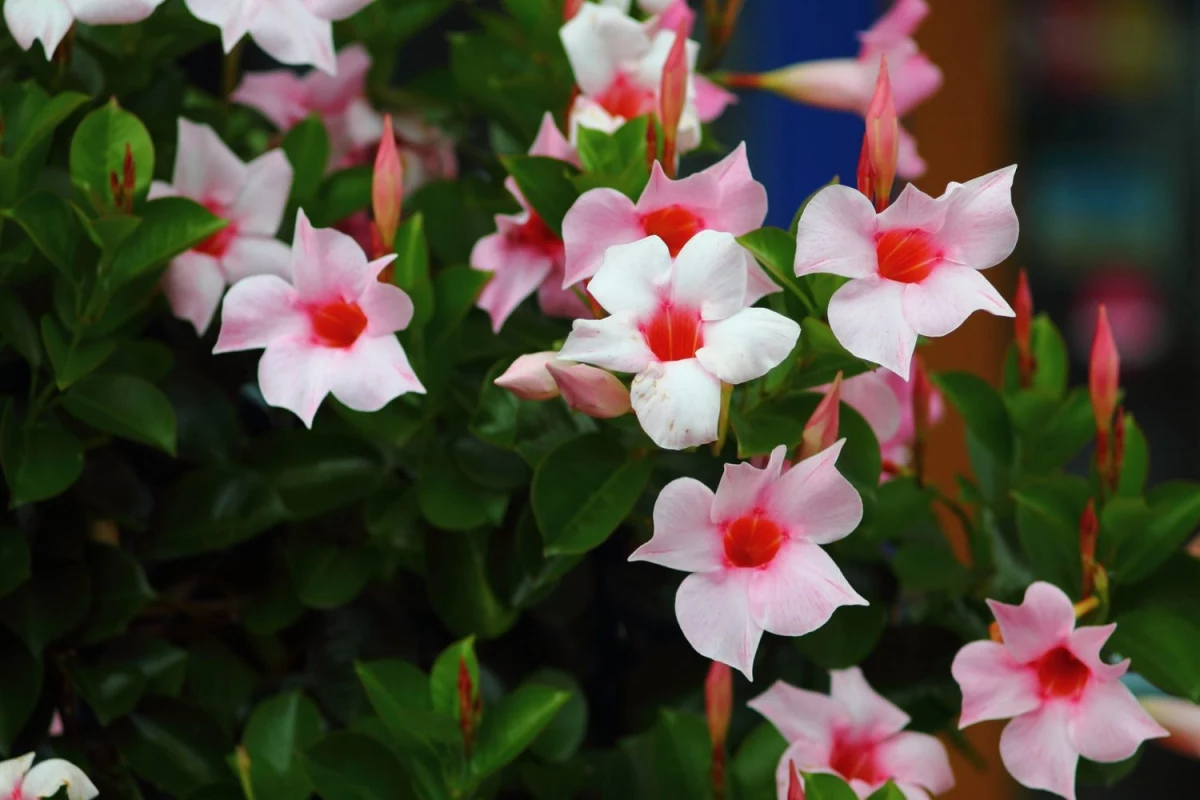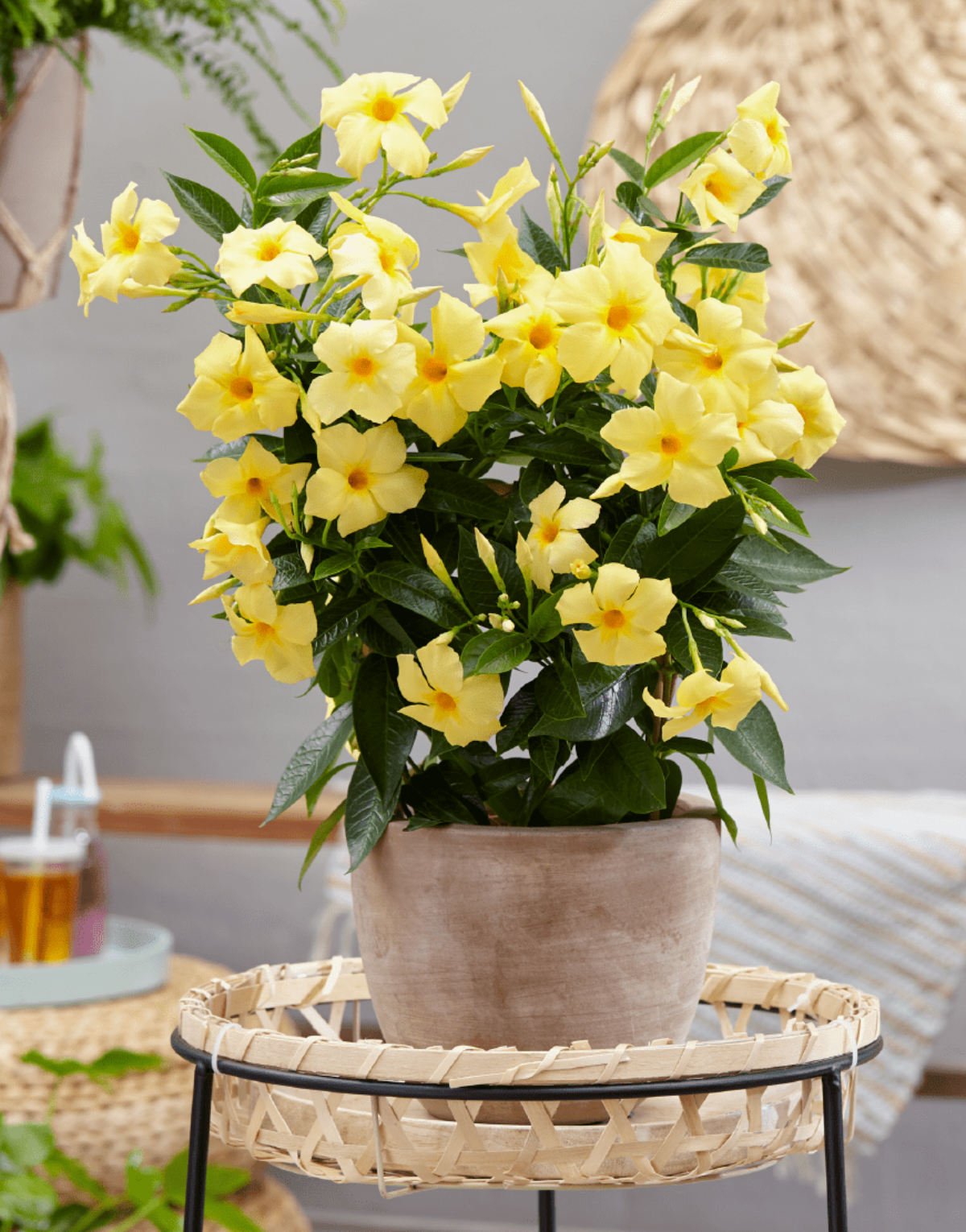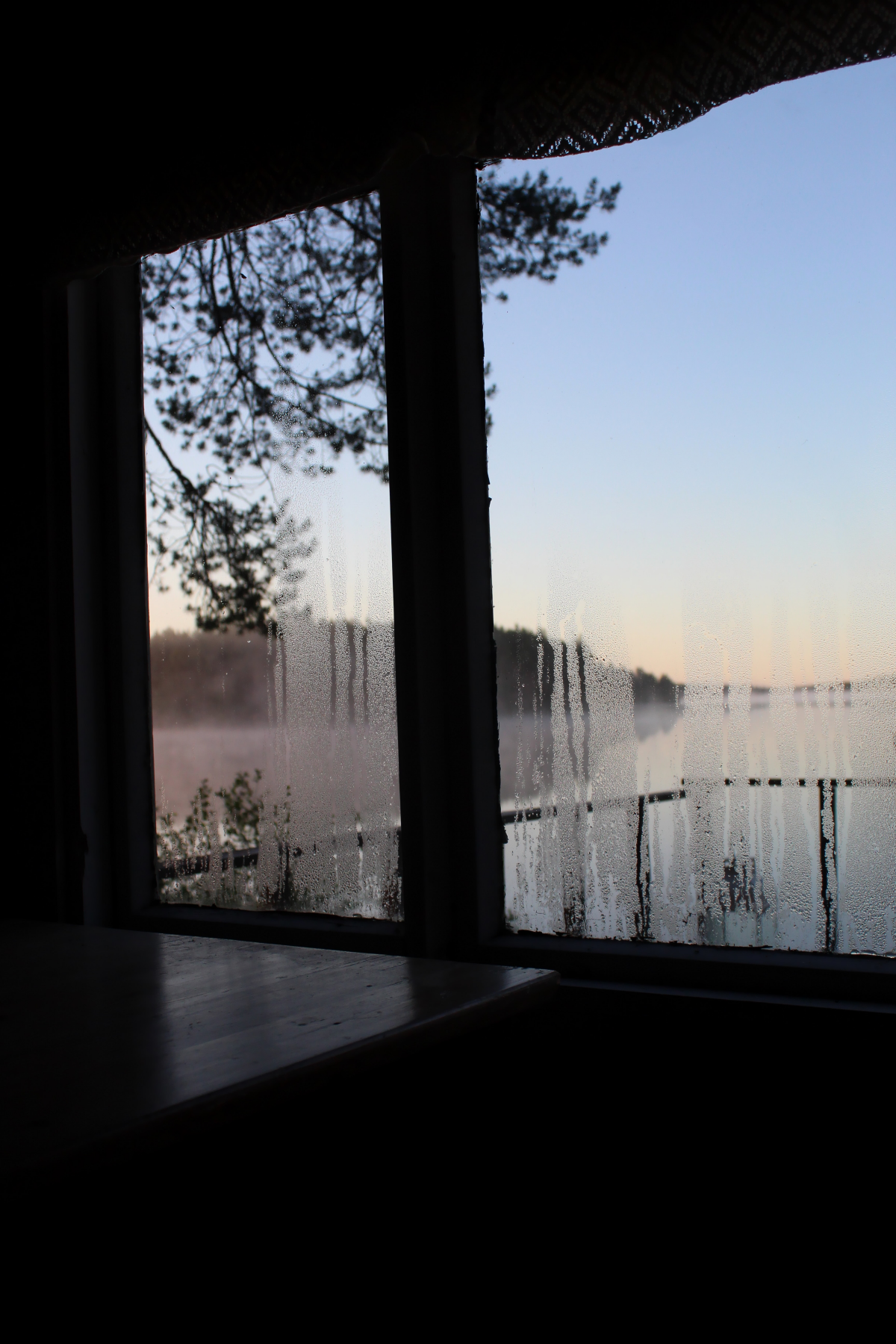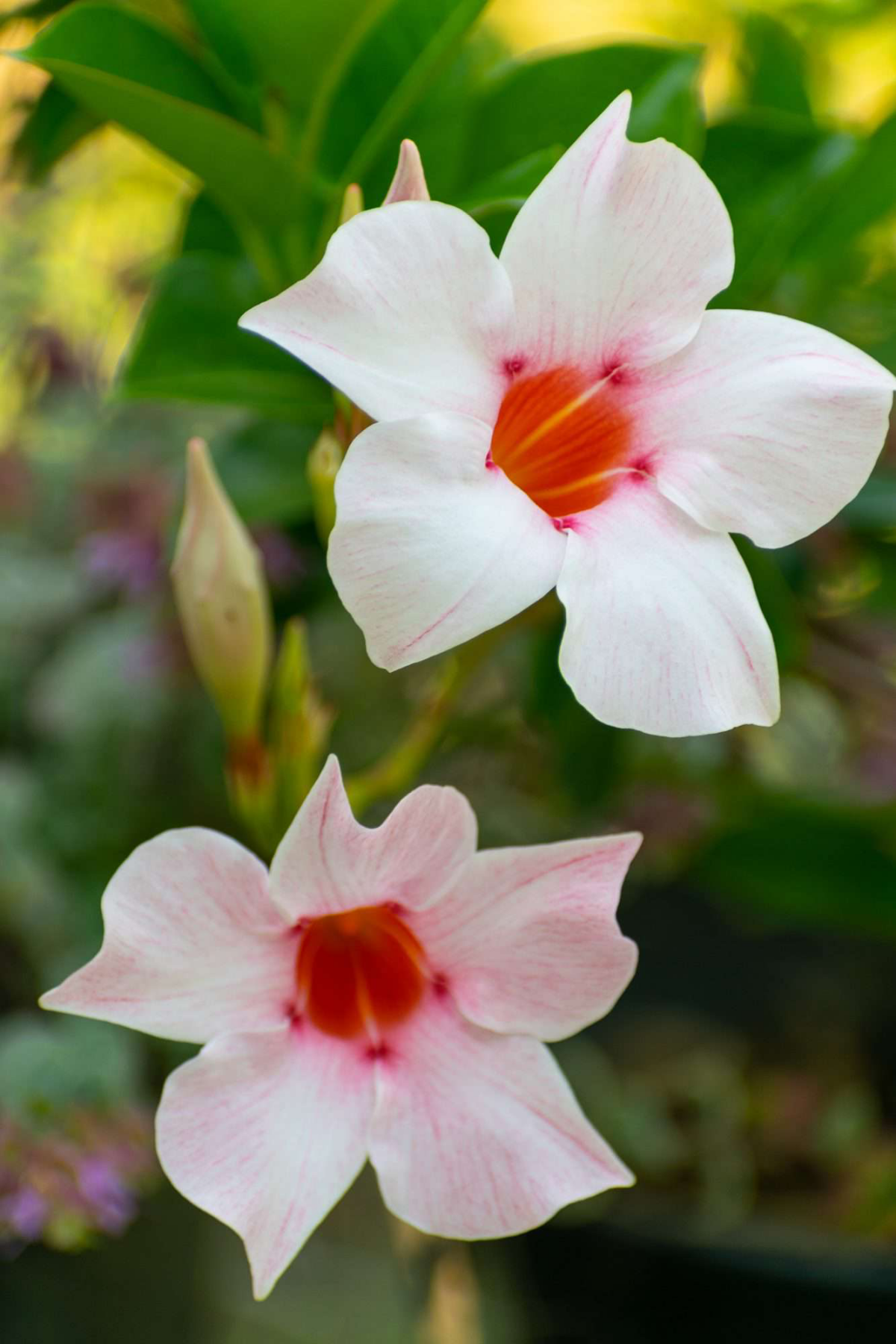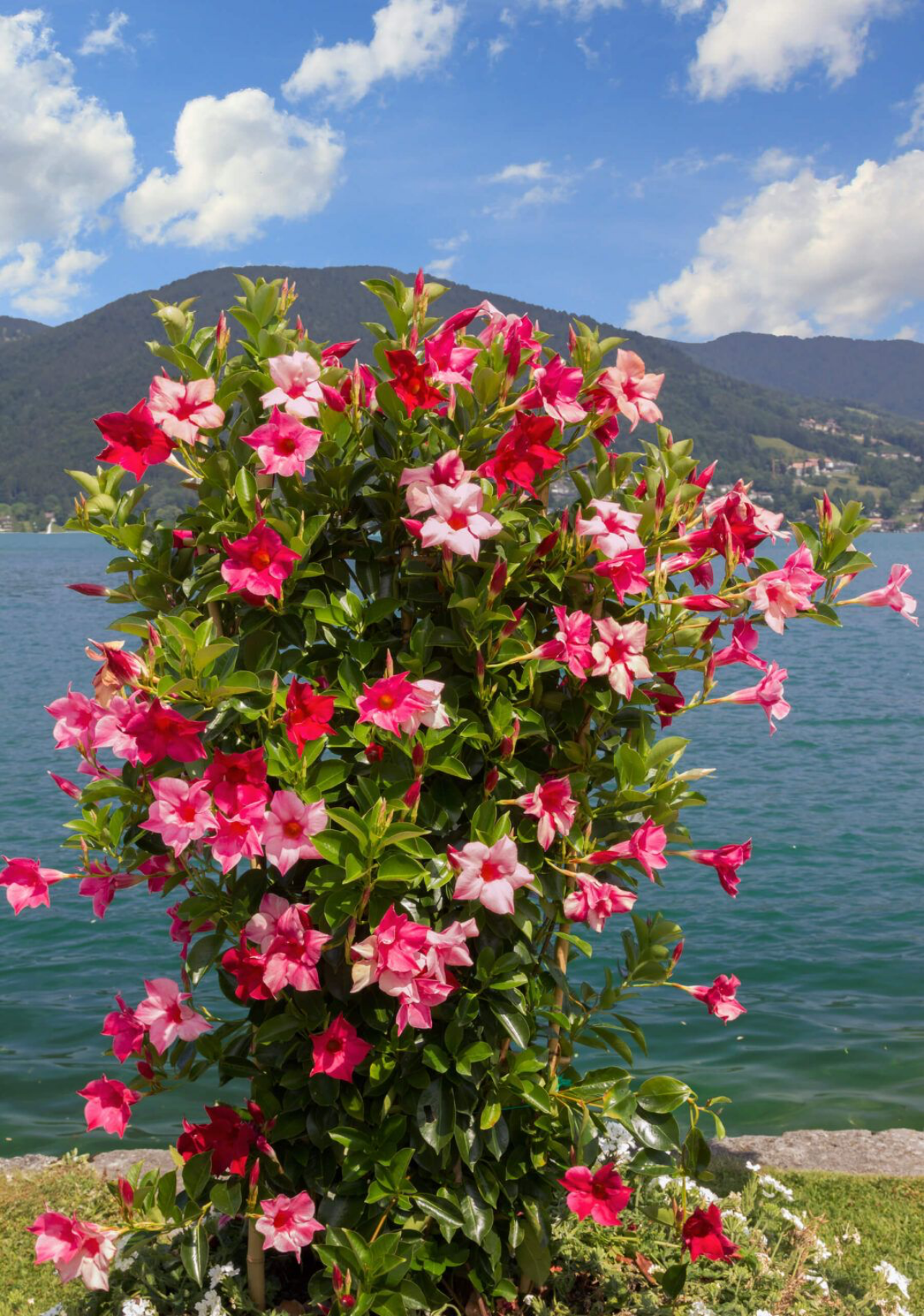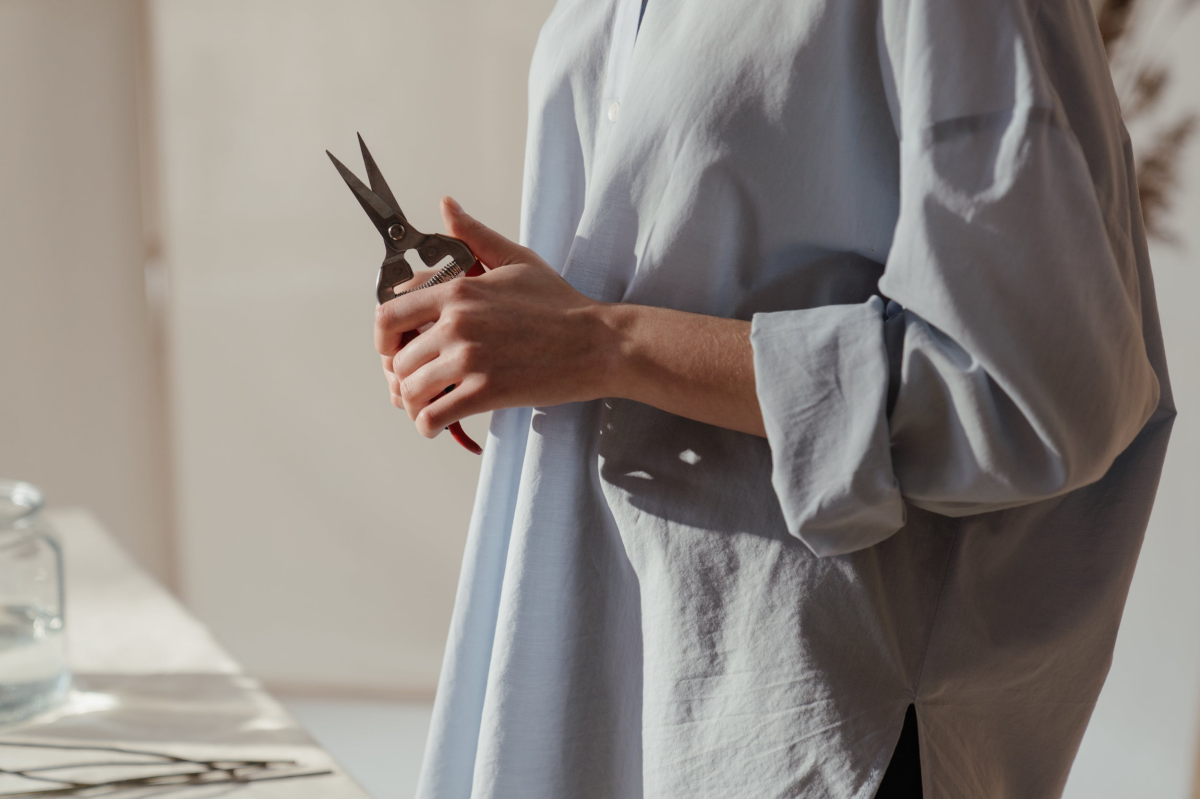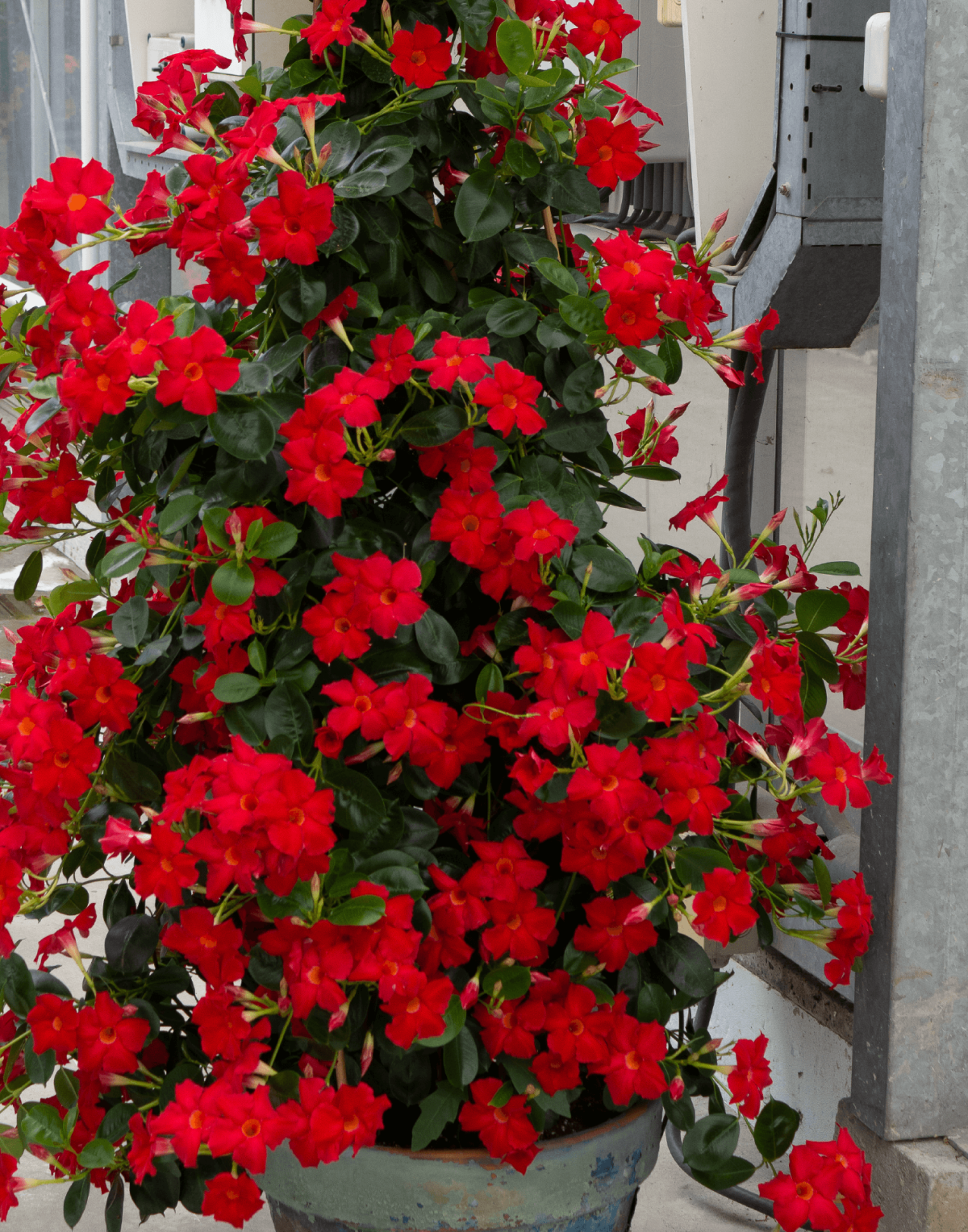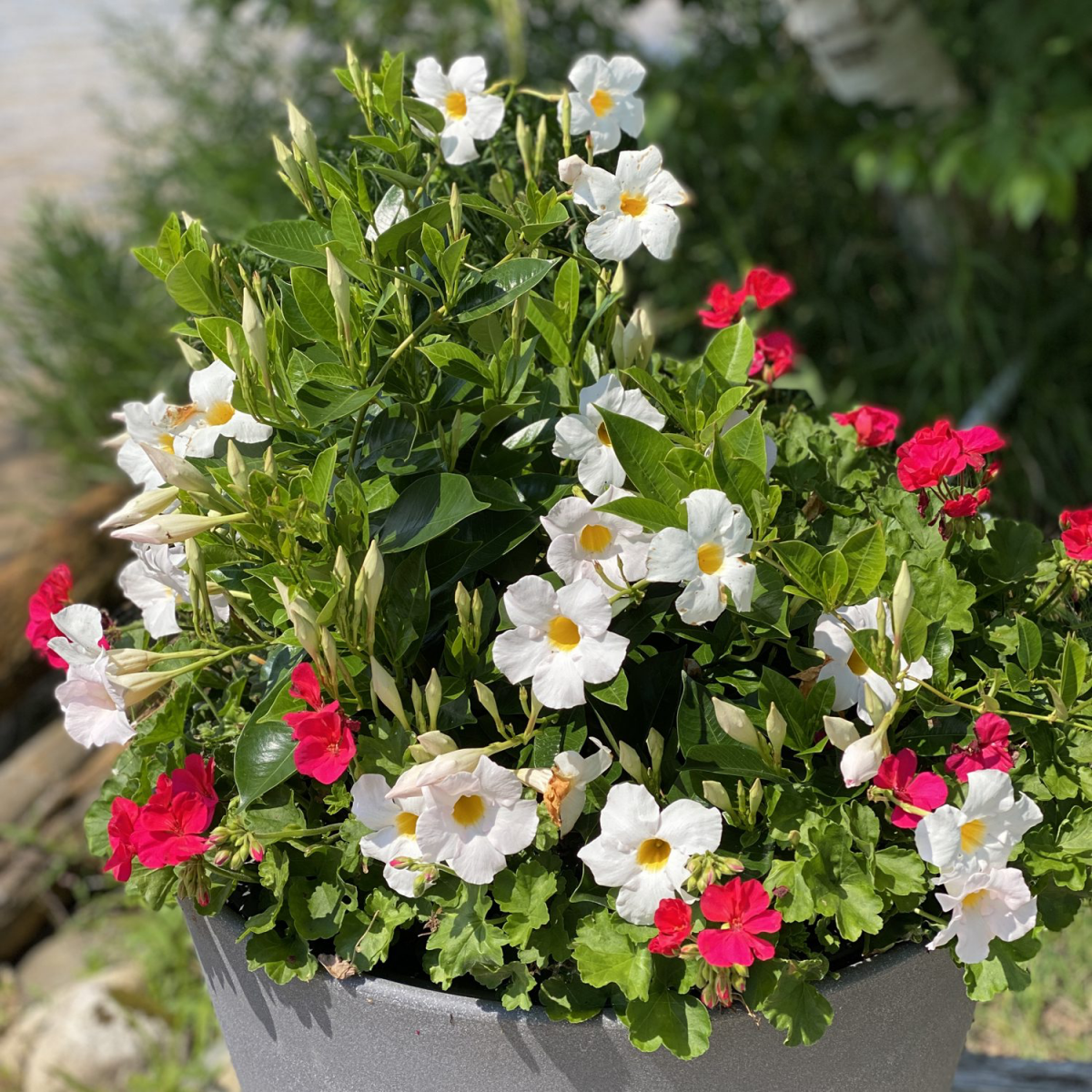The Ultimate Guide To Dipladenia Winter Care
Winter is a time when the air turns crisp, and our gardens get squished under a blanket of frost. It’s a season of hibernation for many plants, but for the vibrant Dipladenia, it’s a period that demands a little extra tender loving care. Known for its stunning, trumpet-shaped flowers and lush foliage, the Dipladenia, a close cousin to the Mandevilla, thrives in warmer climates. As the temperatures dip, this tropical beauty needs some winter wizardry to maintain its splendor. Let’s unravel all the secrets to Dipladenia winter care to ensure that this plant is dazzling even when the weather outside is more ‘frightful’ than ‘delightful’.
Dipladenia demands a little TLC this winter season
In this article
Dipladenia Winter Care Guide
Caring for Dipladenia in winter is akin to orchestrating a symphony. Each aspect of care contributes to a harmonious whole. It’s more than mere survival. It’s about preparing for a splendid spring. Your actions now set the tone for future growth. Think of light, temperature, and water as your instruments. Each must be tuned perfectly for optimal performance. This delicate balancing act requires attention and skill. As you adjust care routines, imagine guiding your plant through a dormant phase. The goal is to reach a crescendo of blooms when warmer days return. Your careful winter care lays the foundation for this. It ensures that, come spring, your Dipladenia will not just survive but thrive spectacularly.
Your actions now set the tone for future growth
Location, location, location
In the heart of winter, Dipladenias long for warmth. They aren’t equipped for the chill. If they could, they’d be beachside in warmer climes. But since a tropical getaway is out of the question, your home becomes their haven. Find a spot bathed in bright, yet indirect light. Think of a cozy corner that catches the morning sun but is shielded from harsh afternoon rays. This spot is their winter sanctuary. It’s about mimicking their natural habitat. Ensure the area is free from drafts. Cold gusts are as welcome as a snowball in the face. It’s about giving them a taste of the tropics, even as snow falls outside.
This plant longs for warmth
Temperature
Dipladenias are like Goldilocks when it comes to temperature. Not too hot, not too cold. They thrive in a range of 60 to 70°F. It’s a delicate dance of maintaining just the right warmth. Remember, temperatures dropping below 60°F can send your Dipladenia into a state of shock. They don’t do well with the cold shoulder. Think of it as maintaining a cozy, consistent environment. It’s like wrapping them in a snug blanket, one that keeps the chill at bay. Regularly check the room temperature. Ensure your Dipladenia isn’t sitting next to a cold window or a heat source. It’s all about finding that sweet spot.
Dipladenias thrive in a range of 60 to 70°F
Watering
Winter watering is a fine art. It’s about balance. Overwatering can lead to root rot, a sure kiss of death in colder months. Wait until the topsoil feels dry. Then, give it a light drink. In winter, your Dipladenia sips water, unlike its summer guzzling. It’s a subtle shift from drenching to dampening. This reduced watering mimics their natural tropical winter, a time of less rain. Check the soil moisture with your finger. If it sticks to your skin, hold off on watering. If it feels dry and crumbly, it’s time for a light watering. It’s less about following a strict schedule and more about responding to the plant’s needs.
Winter watering is a fine art
Humidity hacks
Dipladenias love humidity. It’s like their personal spa. But winter air can be as dry as a desert. If your home feels like a parched wasteland, consider boosting the humidity. A humidifier is a great tool. It adds moisture to the air, creating a mini-tropical oasis. No humidifier? No problem. A pebble tray filled with water works wonders. It’s a simple yet effective way to up the humidity. Just place a tray filled with pebbles and water beneath the plant. As the water evaporates, it creates a more humid microclimate. It’s about mimicking the moist air of their natural habitat. This daily dose of humidity keeps them happy and healthy.
This plant loves a humid environment
Pest Patrol
Winter brings the risk of uninvited guests. Spider mites are tiny but troublesome. They love the warm, dry conditions of heated homes. Regular checks are crucial. Look under leaves and along stems. Spotting them early is key. If you find them, don’t panic. A gentle wipe with a damp cloth usually does the trick. For tougher infestations, a mild insecticidal soap works. It’s about being vigilant. Keeping your plant clean helps deter these pests. It’s like playing detective, but with plants. Regularly inspecting your Dipladenia helps catch these pests before they become a real headache.
Winter brings the risk of uninvited pests
Feeding time
In winter, your Dipladenia isn’t growing much. It’s more about maintenance than growth. So, slow down with the fertilizer. Think of it as their off-season. They’re lounging, not lifting. In warmer months, they’re like athletes in training, needing regular meals. But in winter, they’re on vacation. A light feeding every now and then suffices. Overfeeding can lead to nutrient overload, causing more harm than good. It’s about giving them just enough to sustain them. As spring approaches, you can gradually increase feeding. This prepares them for their growing season, much like a pre-season warm-up.
When it comes to Dipladenia winter care, slow down with the fertilizer
Pruning
Winter is the perfect time for a light trim. It’s not about drastic cuts. Just a little off the top to maintain shape. Pruning encourages bushier growth come spring. It’s like giving your plant a tidy-up. Remove any dead or yellowing leaves. Snip away straggly stems. This not only improves appearance but also boosts health. It allows your Dipladenia to focus its energy on the healthy parts. Use clean, sharp scissors or pruners. Make clean cuts to avoid damaging the plant. It’s a gentle refresh, setting the stage for lush growth when warmer weather returns.
Winter is the perfect time for a light trim
Watchful waiting
Pay attention to your Dipladenia. Each one has its own personality. Some might thrive with less light, others may need more. If it looks unhappy, try changing its spot or adjusting its care. It’s about being responsive. Winter care is as much an art as it is a science. It’s about observing, adjusting, and responding. Your plant will tell you what it needs. You just need to listen. Watch for signs of stress like drooping leaves or discoloration. These are your cues to tweak your care routine. It’s a dialogue, where your plant speaks in leaves and blooms.
Each plant has its own personality
As winter turns to spring, you’ll start to see your Dipladenia perk up, ready to burst into its full glory. This is when you can slowly reintroduce it to the outdoors, but remember, like us stepping out without sunscreen after a long winter, it needs to acclimate. In caring for your Dipladenia during winter, you’re not just nurturing a plant. You’re setting the stage for a spectacular spring and summer display. So, while the world outside might be hushed in winter’s embrace, your Dipladenia will be a vivid reminder of the warmth and color soon to return. With these tips, you’ll have a garden that not only survives the winter but thrives, ready to greet the sun with open blooms.
This is the ultimate Dipladenia winter care guide
